The Savannah Monitor is a species of monitor lizard that lives in Africa. Researchers believe that these reptiles are closely related to ornate and Nile monitors. People frequently keep this species as an exotic pet. Sadly, people often underestimate the care that goes into keeping these creatures. Read on to learn about the Savannah Monitor.
Description of the Savannah Monitor
These lizards have stout bodies, short legs, long tails, and broad heads. They have thick scales to protect them from predators, and the color of their scales varies based on the individual and the region. Their coloration is usually dark, with lighter tan or yellowish patterns.
Most individuals grow to about 40 in. long, and weigh about 12 lbs. or so. Particularly large adults can reach lengths of 5 ft. long.
Interesting Facts About the Savannah Monitor
This species has several unique traits and adaptations to help them survive. Learn some fun facts about these reptiles below.
- Bosc’s Monitor – Europeans often refer to this species as the Bosc’s monitor, after the French scientist Louis Bosc. Louis Bosc was the first researcher to formally describe the species.
- Grounded – Adult monitors usually spend most of their time on the ground and in underground burrows. The smaller juveniles often climb trees in search of food. As they get older and heavier, this behavior becomes more difficult.
- Playing Possum – In the wild, these reptiles do not like interacting with humans. In fact, if people threaten them, it is not uncommon for the lizard to play dead to avoid harassment.
- Territory Terrors – Male monitors grow incredibly aggressive when other invade their territory. They hiss and thrash their tail, and will even battle or bite one another.
Habitat of the Savannah Monitor
As you might have guessed by their name, these reptiles prefer savannah habitats. They also utilize rocky desert ecosystems, but they do not use true desert habitats. Some other habitats that they occupy include grasslands, forests, and woodlands. Though they do utilize forests, they do not live in rainforest habitats.
Distribution of the Savannah Monitor
These creatures live across a strip of Sub-Saharan Africa. While they do not occupy the desert regions of the Sahara, they do live along the southern edges. Their range extends from western Africa to western Ethiopia. The southernmost extend of their range is the northern Congo and Democratic Republic of Congo.
Diet of the Savannah Monitor
Savannah Monitors are carnivores, which means they eat meat. This species has strong jaws to crack open hard-shelled prey. Their diet primarily consists of beetles, snails, centipedes, scorpions, and other invertebrates. They also eat carrion, other reptiles, birds, and small mammals.
Their diet contains more insects when they are younger, and their teeth have not fully developed. As adults, they eat large quantities of snails. They use their sharp teeth to crush the snail shells.
Savannah Monitor and Human Interaction
Human activity does impact these creatures, but they have healthy populations. Because of this, the IUCN lists this species as Least Concern. However, populations in certain regions have shown decline.
People hunt these reptiles as food, and use their parts in Traditional Chinese Medicine. Humans also use their skin, and capture young monitors for the pet trade.
Domestication
Humans have not domesticated this species in any way.
Does the Savannah Monitor Make a Good Pet
These reptiles can make good pets, but you must ensure you can properly care for them. They have very specific dietary, light, and humidity needs. Some individuals can reach extensive lengths as well, so you must be prepared to house them properly.
Savannah Monitor Care
Their enclosures must have plenty of space for them to move about, and an elevated branch or perch for them to sun themselves on. You should only keep one monitor per enclosure, as they can be territorial.
You must provide them with deep sand or gravel to dig in. They should also have basking lamps, and the temperature in their enclosure must stay between 72º and 88º F. It is also important to provide them with daylight, vitamin D, and calcium.
Behavior of the Savannah Monitor
This species is typically solitary and territorial. They spend most of their time searching for prey or sunning themselves. During cooler months, they move underground and remain dormant for periods of time.
As the wet season approaches, males begin courting females. Males find a receptive female and begin following them until they are ready to reproduce.
Reproduction of the Savannah Monitor
About a month after mating, females begin searching for a burrow to lay their eggs. Clutches contain anywhere from 10 to 50 eggs. It takes about 5 or 6 months for the eggs to hatch. The hatchlings are about 5 in. long when they hatch, but they grow quickly in the first few months. They receive no parental care after hatching, and are fully self-sufficient.



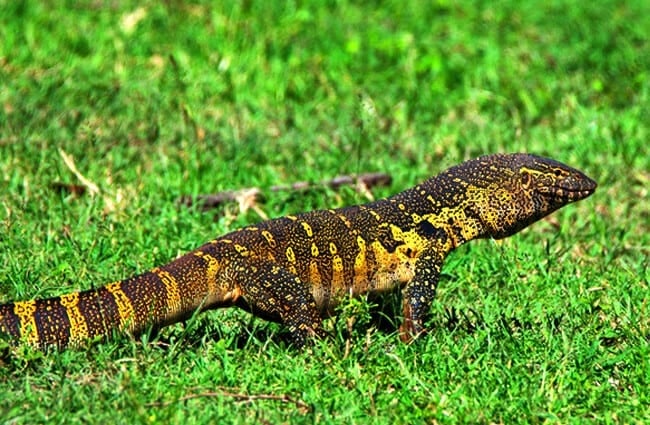
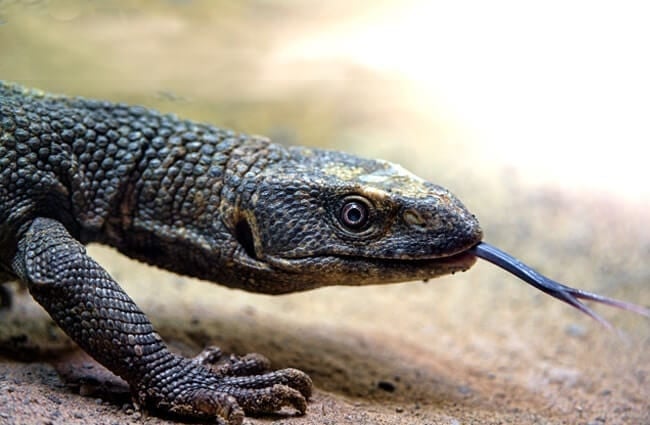

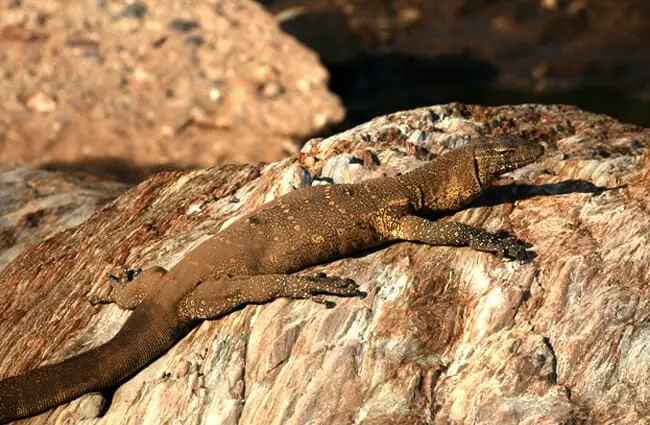
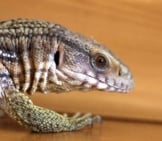

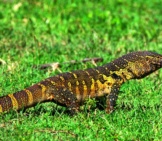
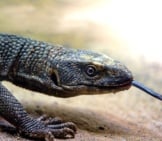
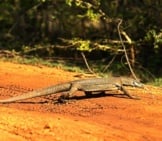
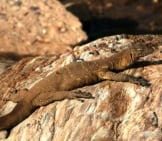
![Red Angus Closeup of a beautiful Red Angus cowPhoto by: U.S. Department of Agriculture [pubic domain]https://creativecommons.org/licenses/by/2.0/](https://animals.net/wp-content/uploads/2020/03/Red-Angus-4-238x178.jpg)












![Red Angus Closeup of a beautiful Red Angus cowPhoto by: U.S. Department of Agriculture [pubic domain]https://creativecommons.org/licenses/by/2.0/](https://animals.net/wp-content/uploads/2020/03/Red-Angus-4-100x75.jpg)

